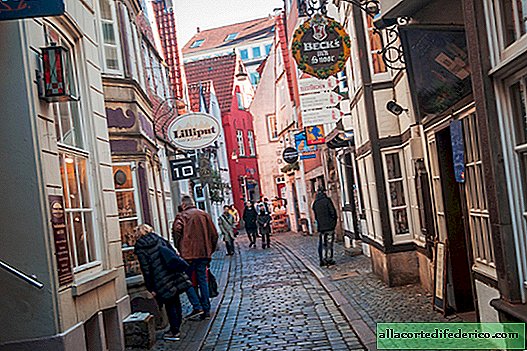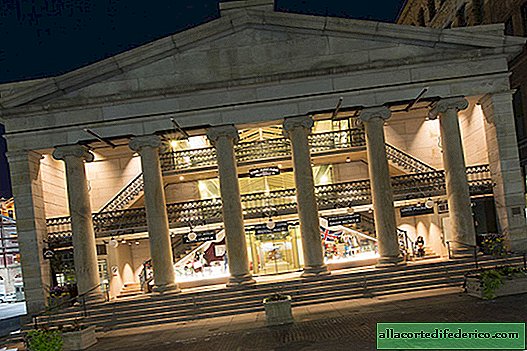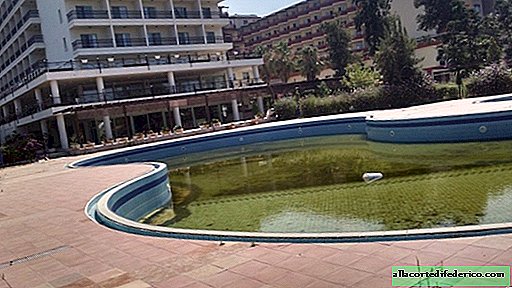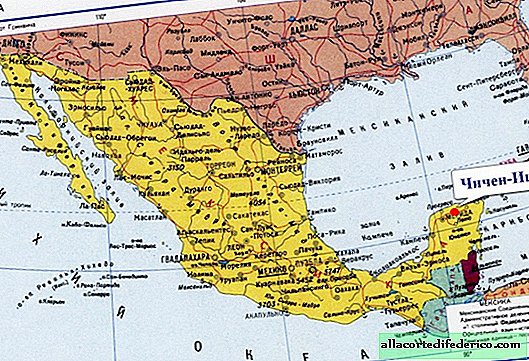Gingerbread district of the poor
How do you imagine the poor neighborhoods? Brazilian favelas hanging like bunches of grapes over a city or graffiti painted brick areas with boarded up windows? Or maybe the poor lived in gingerbread houses that came out of a fairy tale? Let’s take a walk through the Bremen quarter of the poor and look at one of the main attractions of the city. Let's start, however, as always from a distance.
Practically everyone knows that in Russia there is a Golden tourist ring, along which impressionable tourists carry, while treating them with tea driers and telling about the wide Russian soul, while blinding with the gleam of gilded domes and howling in ears “this is Russia”. In Germany, there is something similar, and almost every tourist is advised to rush off the German fairy tale road, which is laid in the legendary places of those same Grimm Brothers.


This road originates in the Hessian city of Hanau, where famous authors were born, and then across the country they bought tickets to the north, past the castles of Snow White and Cinderella, past the Rapunzel tower, stopping by on the way to Sababurg, where a sleeping beauty woke up with a passionate kiss prince. They do not bypass the Pied Piper from Hamelin, Madame Metelitsa is the mistress of the Hoer Meisner mountains, and Schwalm will definitely remind you of Little Red Riding Hood and the starving wolf.

What am I getting at? Moreover, the whole route ends in Bremen, where famous wandering musicians went to with hope of a better life. So let's instead touch the alluring magic of fairytale Germany and taste the gingerbread Europe.

The ancient Schnoor region, which we will talk about today, literally translated from the Low German dialect means "lace". Someone from the locals says that it is because of the narrow streets that meander with a rope on the map of Bremen, someone more romantic adds "so the houses are planted on a rope like beads on a necklace" and happily claps his hands.

Other Germans derive the origin of the name from history. Bremen was a port city where sailors happily went in hoping of a decent mug of drink and a warm bed. Rumor has it that in the end it was the skippers and sailors who rebuilt this area. They themselves lived on the upper floors, and on the first there were not only drinking establishments that pleased the soul of a sailor, but also trading shops, which primarily sold ship equipment. They say that the ship’s ropes were especially dexterous - cords, from which the name of the whole area came from.

Although from such banal information described in each guidebook, a bored reader rubs this very rope with soap, hinting that he is ready to strangle himself from the influx of historical facts. “Less talk, more sense. Why should we go there?” You see, the area licked to a gingerbread tourist gloss was not always like that. Imagine, in the first half of the last century it was a local ghetto, in which the lower strata of the Bremen population lived, relieved themselves of a half-timbered corner in a narrow lane and beaten in the face a bourgeois popping into the light, but in the city this dubious place was called nothing more than a "quarter poor people. "
Perhaps, an echo of that era will bring to you one of the local monuments, of which there are just a lot. A beggar of Bremen - this is the name of the sculpture dedicated to the poor man strolling around the area, begging for a trifle or moldy piece of bread.

Although Bremen should not go past the tragic events unfolding in this quarter, because on November 9, 1938, an event took place throughout Germany, described by history as a "crystal night". Let this sonorous name not try to tune you into a positive wave, because we will talk about the genocide of the Jews. On that fateful night, synagogues across the country began to be set on fire, and located in Shnor was no exception. Well, Nazi soldiers in the light of such a blazing illumination broke windows, burst into Jewish houses and drove defenseless people into the street.

The Second World War left a serious imprint on the whole of Bremen, but it is surprising that Shnor himself was practically not affected, and he did not have to be restored from ruins. Therefore, for Germany, the preserved area is rare. Although it could be washed away under the onslaught of later constructivism, with the desire to rebuild everything that is possible. But the craftsmen from the obstinate squad of artists that appeared in the sixties decided to start the restoration of the entire quarter and prevent it from being demolished. Fortunately, their idea was supported by the government.

As a result, everything turned into a medieval pearl, where stylized forged signs try to convey the old atmosphere, and the multi-colored walls of old houses with red tiled roofs crawl postcards in love with tourist eyes, yanking a traveler by the tongue and reproducing the impressive "Ah!"
That is why I recommend not to bypass this place and be sure to look at the light. In one of the local restaurants we even had lunch, tasting the local Bremen sausages. And this is not a product full of bacon, which Russian meat-makers are trying to feed us. The traditional Bremen sausage is made from beef liver, pork, oats and various spices, which is categorically different from the Bremen Kalachik on our shelves. Well, not only potatoes, but also local green cabbage with pink sausage went as a side dish to it. By the way, this particular dish can be called a reflection of the whole Bremen cuisine. Not tall, but pretty satisfying.


















